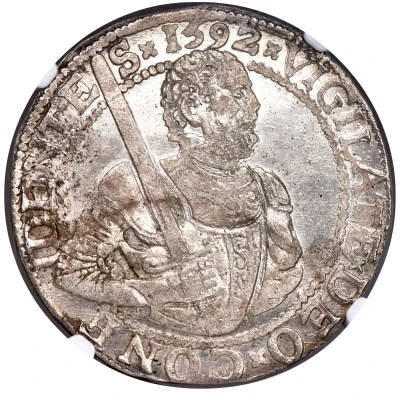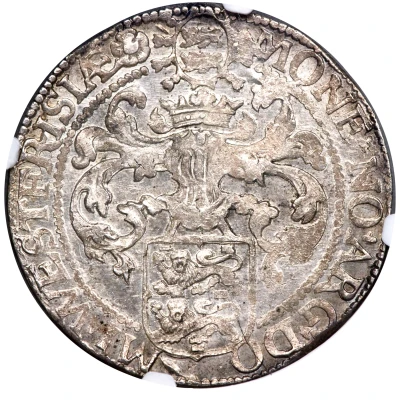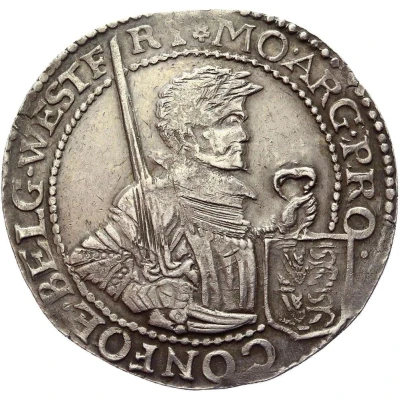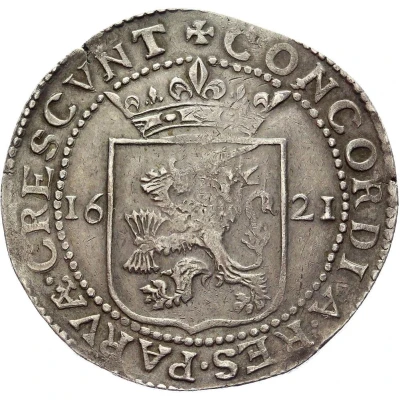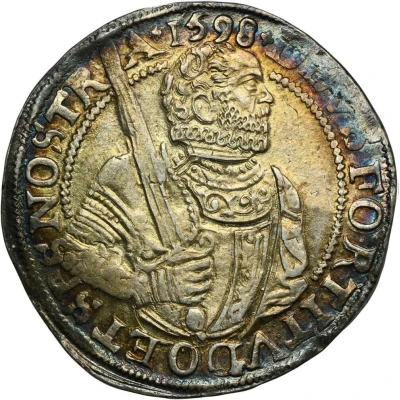
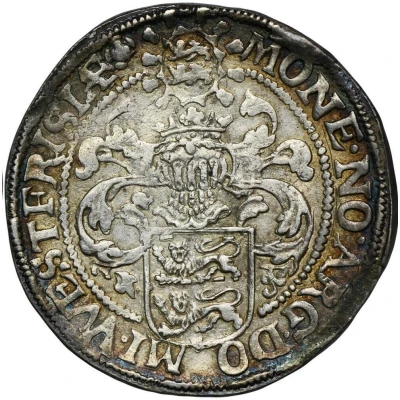

Rijksdaalder "Prinsendaalder"
| Silver (.885) | 29.03 g | 42 mm |
| Issuer | region of West Friesland (Dutch Republic) |
|---|---|
| Type | Standard circulation coin |
| Years | 1593-1601 |
| Value | Silver Ducat (Rijksdaalder) |
| Currency | Gulden (1581-1795) |
| Composition | Silver (.885) |
| Weight | 29.03 g |
| Diameter | 42 mm |
| Shape | Round |
| Technique | Hammered |
| Orientation | Variable alignment ↺ |
| Demonetized | Yes |
| Updated | 2024-10-06 |
| Numista | N#373722 |
|---|---|
| Rarity index | 95% |
Reverse
West Friesland arms topped with elaborate tournament helmet.
Script: Latin
Lettering: MONE + NO + ARG + DOMI + WESTFRISÆ ❀
Unabridged legend: Moneta Nova Argentea Dominium Westfrislandiae
Translation: New silver coinage of the Dominion of West Friesland
Edge
Plain
Comment
The helmeted Rijksdaalder, generally known as the Prinsendaalder (Daldre au Prince), is a large silver coin introduced by the States of Holland in 1583 to approximate the standard used in the Holy Roman Empire and highly prized in trade: the Reichtaler.
It is the only official Dutch coin representing William of Orange, although the coin's legend does not mention him as such, as William had not yet been inaugurated. His name and titles have therefore been omitted for the time being.
This coin was a means of propaganda by the States of Holland to induce the other provinces to recognize Orange as their sovereign.
However, he did not succeed in his appointment as Count of Holland. A few days before his investiture, William of Orange was assassinated in Delft on July 10, 1584.
The Prinsendaalder was minted in two periods: 1583-1585 and 1591-1602, and had a value of 42 stuivers (from 1586, increased to 45).
Interesting fact
The Rijksdaalder "Prinsendaalder" coin from West Friesland (Dutch Republic) is interesting because it was minted during a time of great economic and political change in the region. The Dutch Republic was a powerful trading nation during the 16th and 17th centuries, and the Rijksdaalder was an important coin in their currency system. The fact that it was made of silver (.885) and weighed 29.03g suggests that it was a significant coin with a high value, likely used for large transactions and trade. Additionally, the fact that it was minted in West Friesland, a region known for its agriculture and trade, highlights the coin's connection to the region's economic activity.
